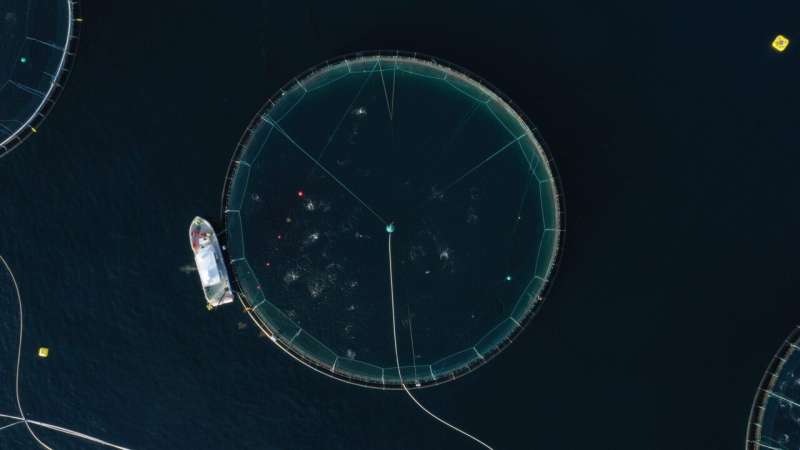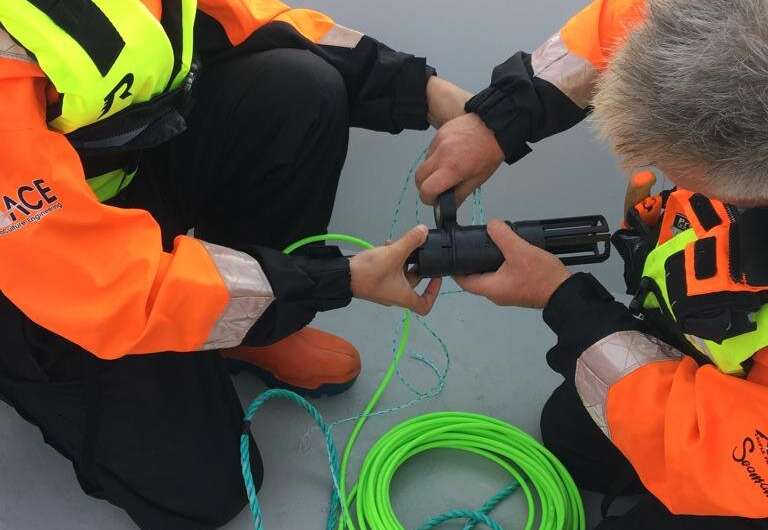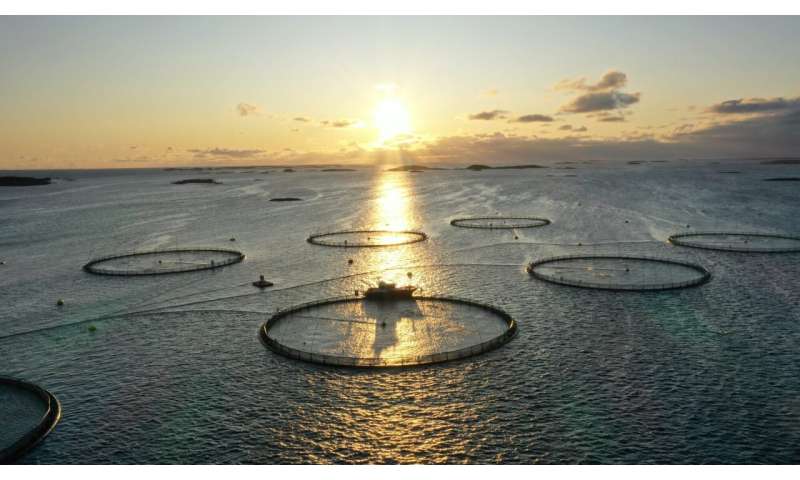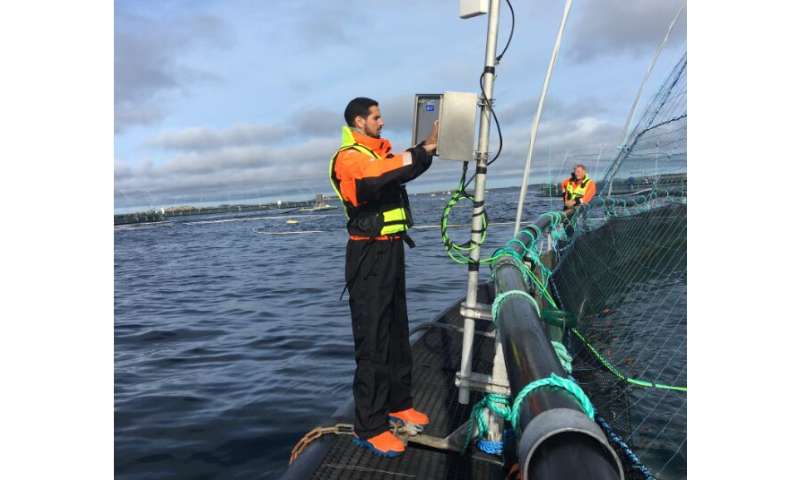Revealing hungry salmon with sound waves

In recent years, Norwegian aquaculture has put a lot of effort into aiming to reduce production costs and increase production efficiency, while at the same time trying to minimize environmental impacts and ensure fish welfare.
One especially interesting factor is the feeding process. Currently, cost of feeding is around 50 percent of the total cost in fish farms. Now a new, innovative automatic feeding system based on passive acoustics systems and Artificial Intelligence may contribute to more sustainable fish farming.
Artificial Intelligence and sound
"Our system combines different technologies, like passive acoustic sensors, IoT, (Internet of Things) and machine learning to monitor and control fish behavior in the cages," says Rosa Martínez Álvarez-Castellanos, R&D Technician at Centro Tecnológico Naval y del Mar (CTN).
SICA is a non-invasive, passive acoustic system comprised of two modules: Data Logger and Control Unit. The Data Logger, which is deployed in sea cages, performs the acquisition stage through the passive acoustic sensor, and a pre-processing stage of the data is transmitted via the Wireless Communication Module. The Control Unit is placed where the feeding process is undertaken. In this project, the system was installed at the barge in SINTEF ACE facilities. Its function is to apply the machine learning algorithms to the data received from the Wireless Communication Module and make decisions about the feeding process.
The SICA system operates autonomously, acquiring and processing the acoustic data. The technology is non-invasive and provides real-time monitoring. In contrast to the traditional method of underwater video cameras, this system was found to detect unusual behavior of salmon more effectively during the feeding process by identifying low feed intake earlier. By improving the efficiency of the feeding process, salmon farmers can reduce environmental impacts and increase their production.

Worldwide testing
The CTN has first tested the system in the Mediterranean for sea bass fish farms. These species are different from salmon, and the farming conditions themselves are much challenging. To verify that the concept works under different conditions, and in order to train the algorithms, they performed tests at the SINTEF ACE full-scale aquaculture facilities in Frøya, Norway.
"We are one of few infrastructures in the world that are specialized in developing and testing new fish-farming technology in full scale," says Kevin Frank, manager of SINTEF ACE. Through AquaExcel2020 Transnational Access, which focuses on the smart feeding of salmon, CTN got access to SINTEF ACE facilities to test their system.
Use of the SINTEF ACE test facilities was crucial for Rosa Martínez Álvarez-Castellanos and her colleges. "We needed access to good facilities to get the best results, and especially under such harsh conditions. In particular, we were able to test our equipment under different weather conditions and with the proper feeding equipment. The results showed that our concept is working."
-

SINTEF ACE – a full-scale laboratory facility in Rataren, Norway. Credit: Magnus Oshaug Pedersen -

SICA deployed in one of the cages at SINTEF ACE facilities in Rataren by Hamid Er-Rachdi/CTN. Credit: Rosa Martínez/CTN
The facility provided access to a fish farm, boats, sensors, and assistance to set up the units at different cages. They also had fast wireless communication that helped them to test the system thoroughly. "This fast connection allowed us to expand the collaboration between CTN in Spain and the system (SICA) in Norway during the experiment," says Álvarez-Castellanos.
For researcher Eleni Kelasidi, this is good evidence that the aquaculture laboratory facilitates full-scale testing and research at the highest level. "Highly qualified employees are an important reason why we are able to make it work," she says. In the future, the SINTEF ACE facilities will also be open for international researchers through AquaExcel 3.
Provided by Norwegian University of Science and Technology




















